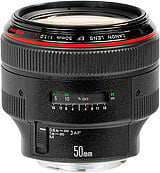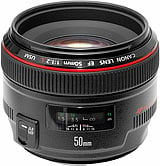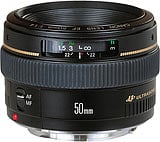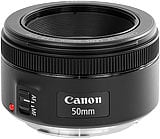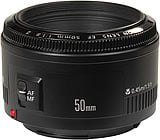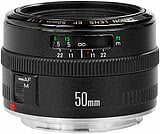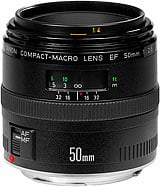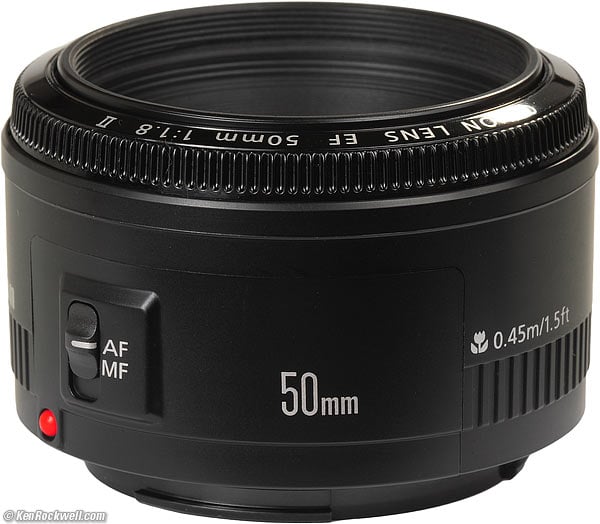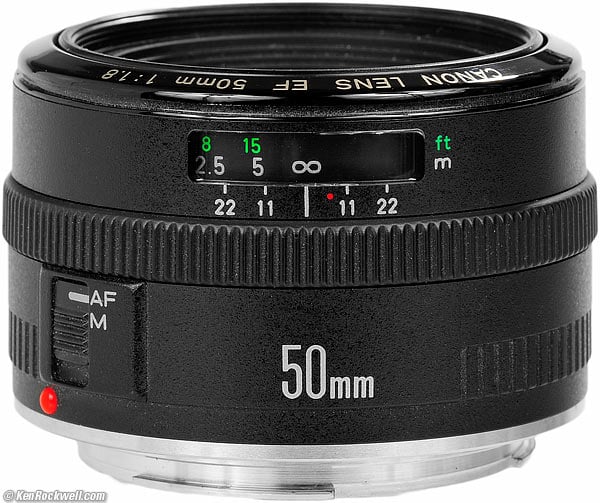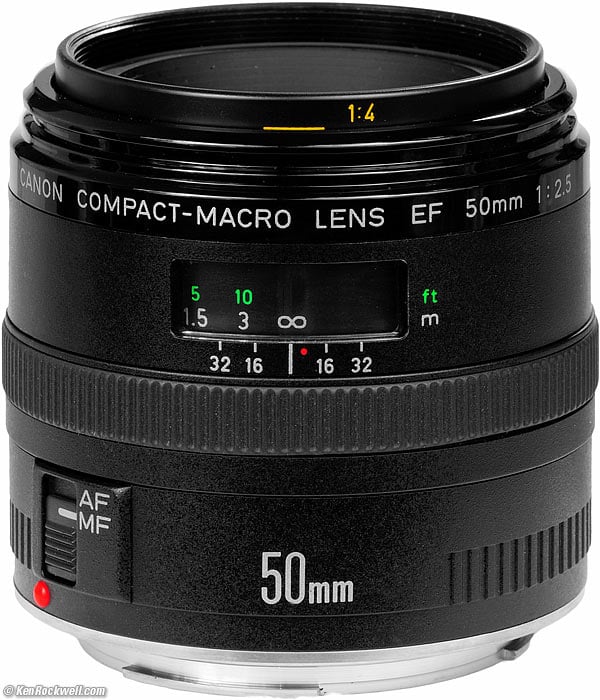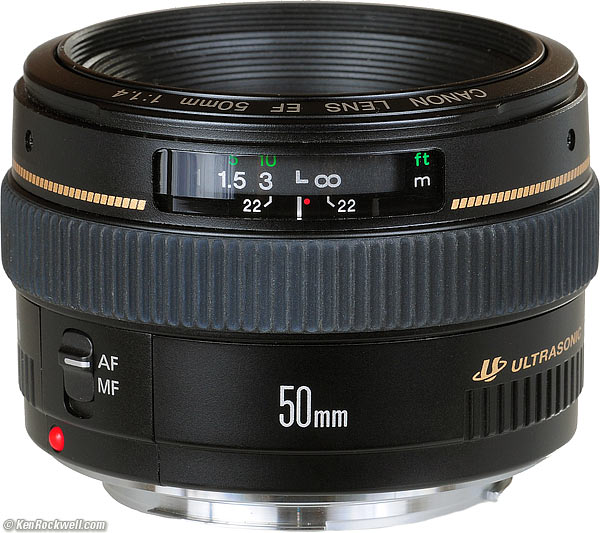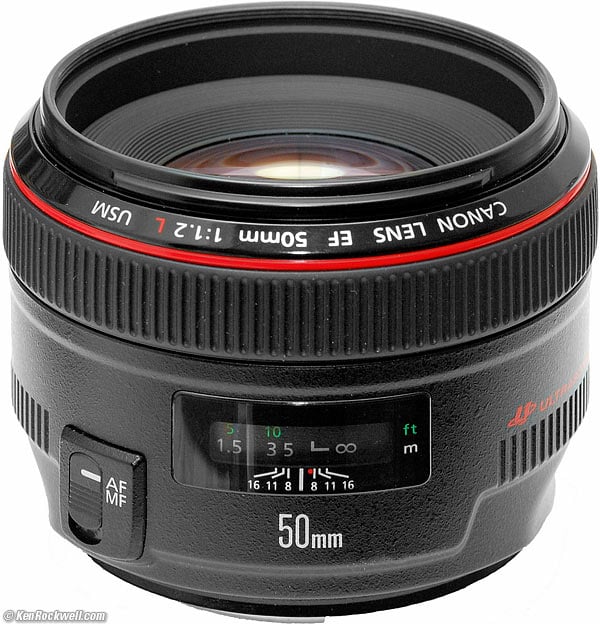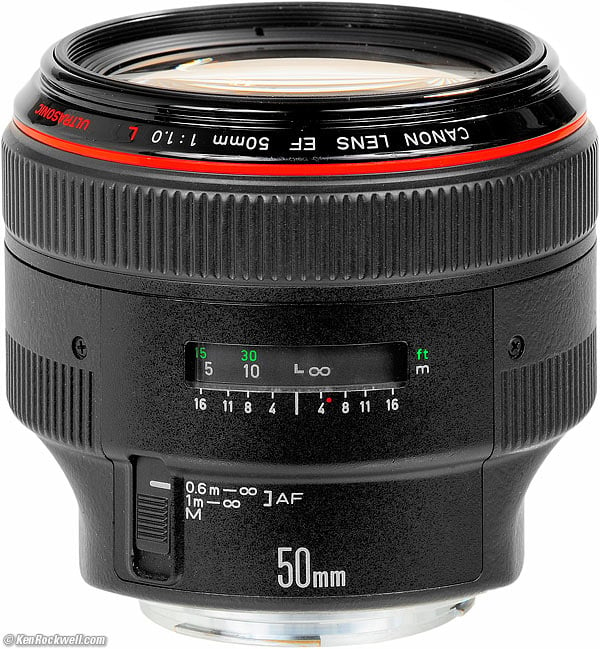Home Donate New Search Gallery Reviews How-To Books Links Workshops About Contact
Canon EF 50mm Lenses Compared
© KenRockwell.com. All rights reserved.
June 2015 Canon Reviews Canon Lenses All Reviews See also: Premium 50mm lenses compared.
This free website's biggest source of support is when you use those or any of these links when you get anything, regardless of the country in which you live — but I receive nothing for my efforts if you buy elsewhere. I get no government hand-outs and run no pledge drives to support my research, so please always use any of these links for the best prices and service whenever you get anything. Thanks for helping me help you! Ken. Click any of the links or images to get to complete reviews of any of these lenses. |
| To scale: | |||||||
| Anni | 1989-2000 |
2006-today |
1993-today |
2015-today |
1990-2015 |
1987-1990 |
1987-today |
| Instant MF override? | Yes |
Yes |
Yes |
Yes, with finger holding shutter buttoin |
No |
No |
No |
| AF Speed | Moderate |
Fast |
Fast |
Pretty fast |
Fast |
Fast to Moderate |
Fast to Moderate |
| Filter size | 72mm |
72mm |
58mm |
49mm |
52mm |
52mm |
52mm |
| Filter threads | Metal |
plastic |
plastic |
plastic |
plastic |
plastic |
Metal |
| Diameter |
3.60" 91.5 mm |
3.384" 85.96 mm |
2.9" 73.8 mm |
2.72" 69.2 mm |
2.683" 68.16mm |
2.65" 67.4mm |
2.659" 67.54mm |
| Length (from flange) |
3.21" 81.5 mm |
2.581" 65.56 mm |
2.0" 50.5 mm |
1.55" 39.3 mm |
1.591" 40.4 mm |
1.67" 42.5 mm |
2.477" 62.93 mm |
| Optics | 11/9 |
8/6 |
7/6 |
6/5 |
6/5 |
6/5 |
9/8 |
| Optical tricks |
Bi-Aspherical Floating elements |
Aspherical Floating elements |
conventional design |
conventional design |
conventional design |
conventional design |
Floating elements |
| Diaphragm Blades | 8 |
8 |
8 |
7 |
5 |
5 |
6 |
| Diaphragm Blades | Conventional (better sunstars) |
Rounded at large apertures |
Conventional (better sunstars) |
Rounded at large apertures |
Conventional (better sunstars) |
Conventional (better sunstars) |
Conventional (better sunstars) |
| Sunstars | 8 points |
8 points, muted |
8 points |
weak |
10 points |
10 points |
6 points |
| Depth of Field scale | Full |
cramped |
almost nonexistent, only for f/22 |
none |
none |
almost nonexistent, only for f/11 and f/22 |
almost nonexistent, only for f/22 and f/32 |
| Focus Scale | Yes |
Yes |
Yes |
No |
No |
Yes |
Yes |
| Close focus |
2' 0.6 m |
1.5' 0.45 m |
1.5' 0.45 m |
1.1' 0.35 m |
1.5' 0.45 m |
1.5' 0.45 m |
0.75' 0.23 m |
| Repro Ratio | 1:9.1 0.11x |
1:6.7 0.15x |
1:6.66 0.15x |
1:4.8 0.21x |
1:6.7 0.15x |
1:6.7 0.15x |
1:2 (0.5x) 1:1 (1x) with adapter |
| Sharpness at normal apertures | Excellent |
Excellent |
Very Good |
Excellent |
Excellent |
Excellent |
Excellent |
| Sharpness at large apertures | If in perfect focus, very good |
Very Good |
Good |
Good |
Good |
Good |
n/a |
| Sharpness, full-frame far corners (rarely important) | Fair at f/1.0 Very Good at f/8 |
Very Good at f/1.2 Excellent at f/8 |
Good at f/1.4 Excellent at f/8 |
Good at f/1.8 Excellent at f/8 |
Good at f/1.8 Excellent at f/8 |
Good at f/1.8 Excellent at f/8 |
Very Good at f/2.5 Excellent at f/8 |
| Distortion at 3 meters | +1.5 |
+1.4 |
+1.5 |
+2.0 |
+1.4 |
+1.4 |
+0.1 |
| Weight |
35.9 oz. 1,018 g. |
20.9 oz. 592 g. |
9.5 oz. 268 g. |
5.6 oz. 159 g. |
4.320 oz. 122.5 g. |
6.57 oz. 186.2 g. |
9.5 oz. 269 g. |
| Mount | Metal |
Metal |
Metal |
Metal |
Plastic |
Metal |
Metal |
| Price, 3/2007 | $3,000 used |
||||||
| Price, 4/2010 | $4,000 used |
||||||
| Price, 8/2012 | $4,000 used |
||||||
| Price, 11/2013 | $4,000 used |
|
$130 used |
||||
| Price, 5/2015 | $4,200 used |
$130 used |

